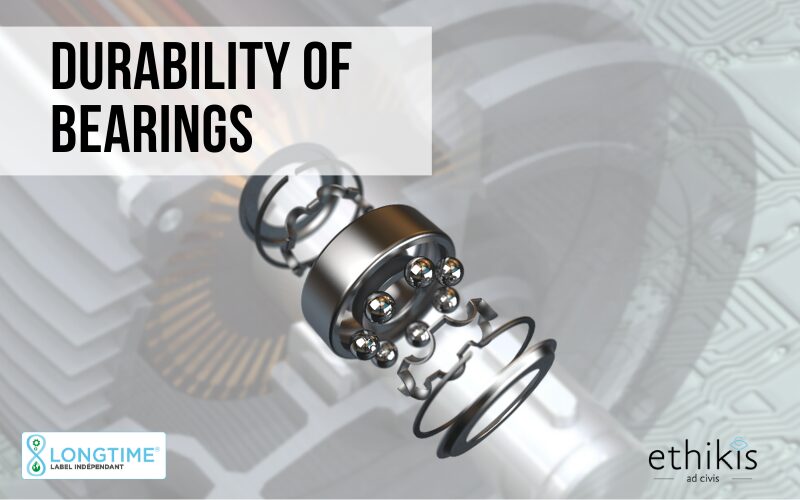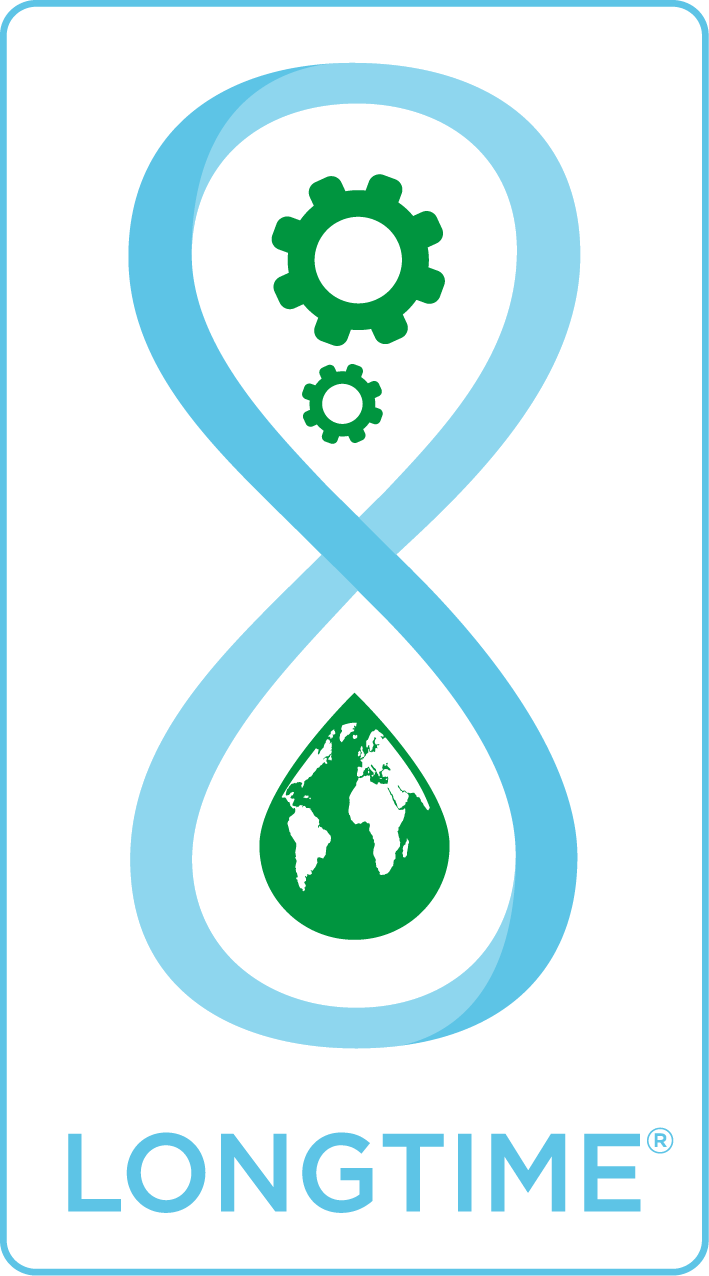Capable of turning at 400,000 rpm and climbing to 580km/h, the mechanical bearing is an element of fascinating aptitude, coming into play in the design and construction of many devices.
From washing machines to trimmers, from electric scooters to airliners, ball bearings are everywhere. This small object, whose main function is to guide in rotation or translation, is an essential component in the lifespan of products.
So is it the ideal culprit in obsolescence? Bring in the accused!
Bearings are one of the key points in the study of durability. The checks involved in awarding theLONGTIME® label systematically verify the manufacturer’s choice and the quality of its bearings, to ensure that they are built to last.

What is a bearing?
It’s not easy to find your way around the wide range of bearings on the market: ball bearings, tapered roller bearings, needle roller and cage assemblies, roller bearings… There are so many different names for all kinds of industrial applications.
However, in most cases a bearing is composed of the same parts:
- One outer ring and one inner ring with bearing grooves
- Bearings (balls, rollers, needles)
- A rolling cage
- Flanges, preserving the integrity of balls and lubrication
Good to know: :
- AB = No flange (rarely used)
- Z = 1 dust cover
- ZZ = 2 dust covers
- 2RS = 2 “watertight” flanges
- S or W = stainless steel
How do bearings affect product durability?
In the product design phase, three factors must be taken into account to determine the most suitable bearing:
- Field of application (household appliances, aerospace, heavy industry, etc.)
- Operating environment (humidity, dust, sidereal cold, chemicals)
- The specifications/performances (speed, effort, etc.) they must meet.
But that’s not enough to ensure optimum, trouble-free service life. Two other parameters play a decisive role in bearing life:
- The intrinsic quality of the bearing (materials, manufacture)
- Bearing lubrication
It’s worth remembering that bearing lubrication plays a key role in reducing failures. It extends bearing life by reducing friction and therefore wear. In addition, lubrication can, in some cases, improve performance.
Quality differences between ball bearings?
We put the question to Charles Membre, bearing expert at 123Roulement:
Bearings are relatively reliable components. Bearing quality is based primarily on the materials used, and the precision of machining and assembly. Low ring clearance and low machining tolerances are key factors in bearing durability.
The quality of the materials (steel, bronze, nylon, stainless steel, elastomer) used for the rings, balls, cage and flanges is paramount, but so is the quality of the lubrication and the bearing’s ability to prevent it from escaping, in some cases.
Beware of the ABEC standard:
The ABEC (Annular Bearing Engineer Council) standard is not a guarantee of durability. This standard measures the tolerance rating of ball bearings. It therefore indicates a more or less free rotation, much appreciated in certain areas such as skateboarding, scootering or rollerblading.
What are bearing failures?
Bearings are subject to two types of failure: wear and breakage.
Bearing wear, whether normal or premature, is characterized by a loss of efficiency and often by abnormal noise. These are the signs of a bearing at the end of its life.
Wear is an unavoidable phenomenon that develops over time as surfaces rub and slide against each other. This phenomenon can be greatly accentuated if the bearing does not have the right characteristics, or if it has a lubrication problem.
Bearing breakage is generally characterized by equipment failure and downtime. This can happen when operating conditions exceed the bearing’s capacity, or when the bearing is excessively worn.Bearings can also seize if they have not been running for a long time and/or if storage/operating conditions are unsuitable.
Repairability of ball bearings
Bearings are naturally difficult to repair. However, it’sa component that needs to be removable and replaceable, as its lifespan may be limited by inevitable wear and tear. Bearing repairability will therefore essentially depend on how easily they can be accessed, and whether or not they can be extracted under good conditions.
As far as removal is concerned, despite popular belief, bearings are relatively easy to replace, provided you have the necessary tools.
The other crucial point is reassembly. It is important to master the gesture in order to replace the bearing under optimum conditions and without risk of damage.
Bearings often play a key role in keeping our equipment running smoothly. The price of the replacement part is low compared to the high added value in terms of product life extension. It is therefore essential to place a high priority on accessibility, or to compensate with over-quality.
Summed up by Charles, Customer Relations Manager at 123Roulement
Bearings are a great service to our industry and to DIY enthusiasts. If it’s well-built, well-chosen, easily accessible and well-maintained, it has every chance of lasting and posing no problems in terms of reliability.

